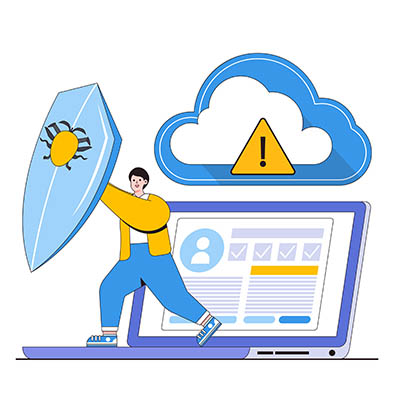Do you know which of your employees is your weakest security link? It doesn’t take much to break into an employee’s email, and from there, the rest of your infrastructure. All a scammer has to do is convince the right employee to click on a link, download an infected attachment, or hand over their password. Can you honestly say that your team has the knowledge to combat such a profound threat?
You’ve locked down your network with cybersecurity—but what about the risks right outside your door? Physical security breaches are a serious threat to your employees, data, and critical equipment. For any small business owner, addressing this issue isn’t just good practice—it’s a necessity for true peace of mind.
Let’s imagine that your business has a hidden back door—one that your building manager doesn’t even know exists—and that door leads straight into the heart of your office. By the time someone finds out that door exists, someone could have snuck in to wreak all kinds of havoc, unbeknownst to you. This is what is known as a zero-day threat; it’s a security vulnerability that is being actively exploited in the wild, one that was previously unknown to the vendor and unpatched against, and it’s a serious problem for any SMB.
Imagine that your screen flashes a devastating message: your critical data is encrypted, and you face a massive ransom demand. Your operation grinds to a halt. This isn’t just an enterprise problem; it’s the harsh reality for businesses of all sizes. Cyber threats don’t discriminate. Your small or mid-sized business is a prime target.
With over $101 million in jewelry stolen, the recent Louvre heist was a costly success for criminals. However, French publications suggest the thieves may have encountered less resistance than an organization of the museum’s stature should provide, thanks to a documented history of severe cybersecurity vulnerabilities. This history offers a crucial lesson for all businesses: Foundational security flaws can undermine even the most complex physical protections. Let’s examine the documented oversights and what they imply about the museum’s current security posture.
Navigating the aftermath of a data breach can be a confusing and stressful experience. Whether it’s a major company or a small business, a data breach means your personal information might be compromised. So, what should you do? Here’s a guide on how to react and what your options are.
Business cybersecurity is a constant concern, and attacks are becoming more sophisticated and frequent. Understanding the most common threats is the first step in protecting your company. Here are four of the most frequent ways businesses get attacked.
AI is everywhere, helping us do everything from writing emails to analyzing data. It’s a powerful tool that can make work more efficient, but it also comes with a hidden risk you should be aware of: prompt hacking. This isn’t some half-baked science fiction. As more businesses rely on AI, understanding prompt hacking isn’t just a job for the IT department—it’s something everyone needs to know.
When you think of the dark web, images of shadowy figures and illicit activities might spring to mind. Unfortunately for businesses, the dark web isn’t just a place of intrigue; it’s where your stolen data goes to get shared and sold.
Today’s cyberthreats are invisible, they’re malicious, and they can bring a business to its knees. For many small businesses, cybersecurity feels like a distant problem—a concern for the corporate giants with sprawling server farms. Unfortunately, that’s a dangerous misconception. Every business, regardless of size, is on the front line.










